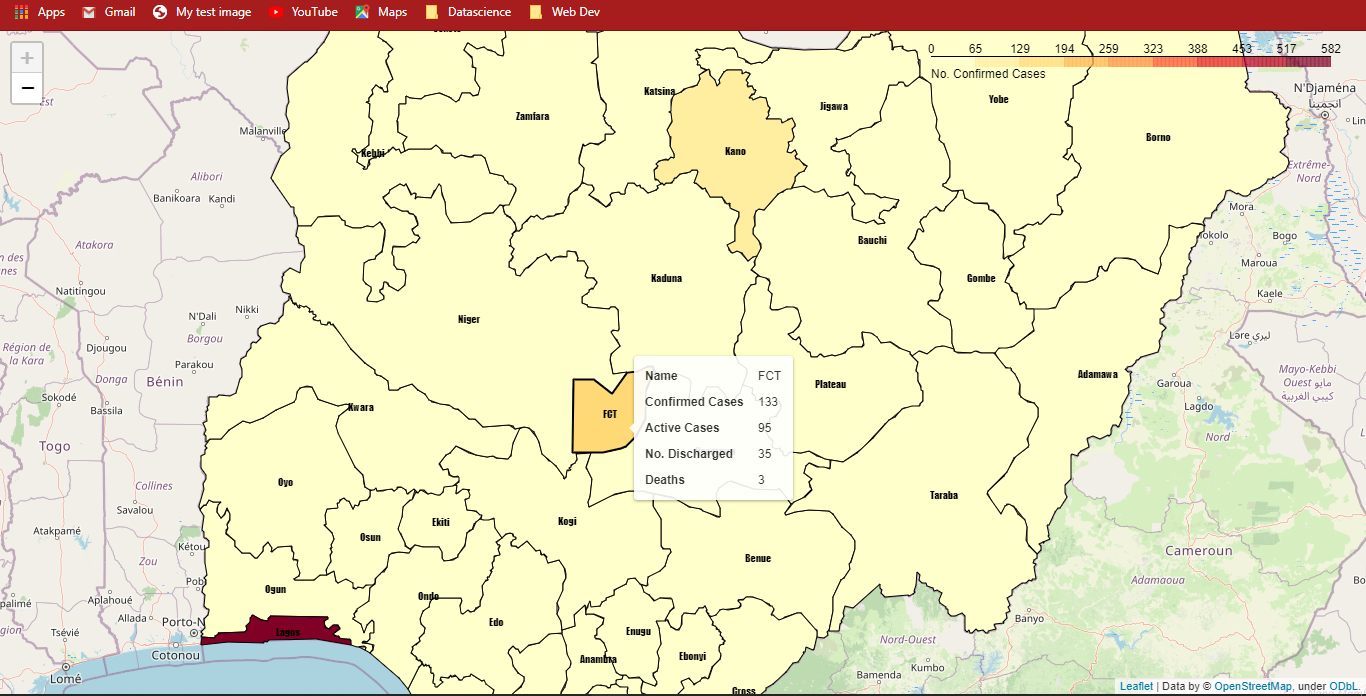This repository was created to share my code and insight on how to generate a Choropleth map using Folium.
A choropleth map is a map which uses differences in shading, colouring, or the placing of symbols within predefined areas to indicate the average values of a particular quantity in those areas (from oxford dictionary) as seen in the image below:

Inorder to generate a map visualization with folium we require a shapefile of the area of the world map we want to work with.
In this article I will be creating a visualization of the Nigeria map area, so the need to source for a shapefile in .KML format of the Nigeria map area having polygon coordinates of each state.
There are a lot of sites out there that simply supply this resource for free, for this visualization I got my shape file from IGISMAP, they also offer shapefiles for other countries.
Moving on from step 1, let us convert the .KML file to a Geojson file.
I used an online cloud resource to convert my .KML to a Geojson file, the name of the online resource is MYGEODATA.
From this step forward we get hands on with some Python codes.
We start by installing Python Pandas and GeoPandas packages to help us integrate the data we need to visualize into the geojson file.
In this article I am visualizing the COVID-19 confirmed cases distribution across the states of Nigeria using data gotten from the NCDC site (note: data might not be up to date by the time you are reading this publication).
The Jupyter notebook containing the well commented code for this step can be found in my GitHub Repo.
Below is a screenshot of the final dataframe after integrating the COVID-19 data with the Geojson file using Pandas and Geopandas.
To the final step which is the visualization of the choropleth map with Folium.
We will be using the folium.Choropleth module, so we need to install the Folium package for this using conda install /pip install.
The Jupyter notebook containing the well commented code for this step can be found in my GitHub Repo.
Below is a screenshot of our generated Choropleth interactive map.
Other forms of map visualization are possible using the Folium package check out the Folium documentation for more info on that. The generated map can be saved as an .html file which can be embedded to a webpage. I hope you find this article helpful and insightful, if so kindly leave a star on my GitHub Repo.



